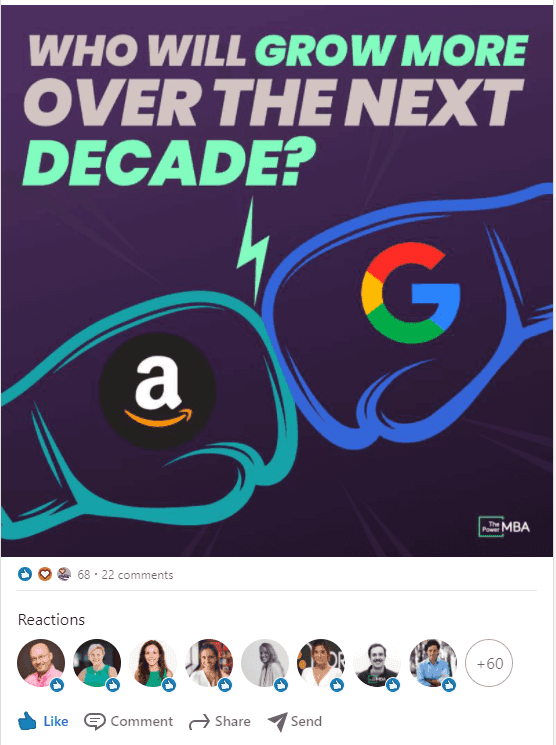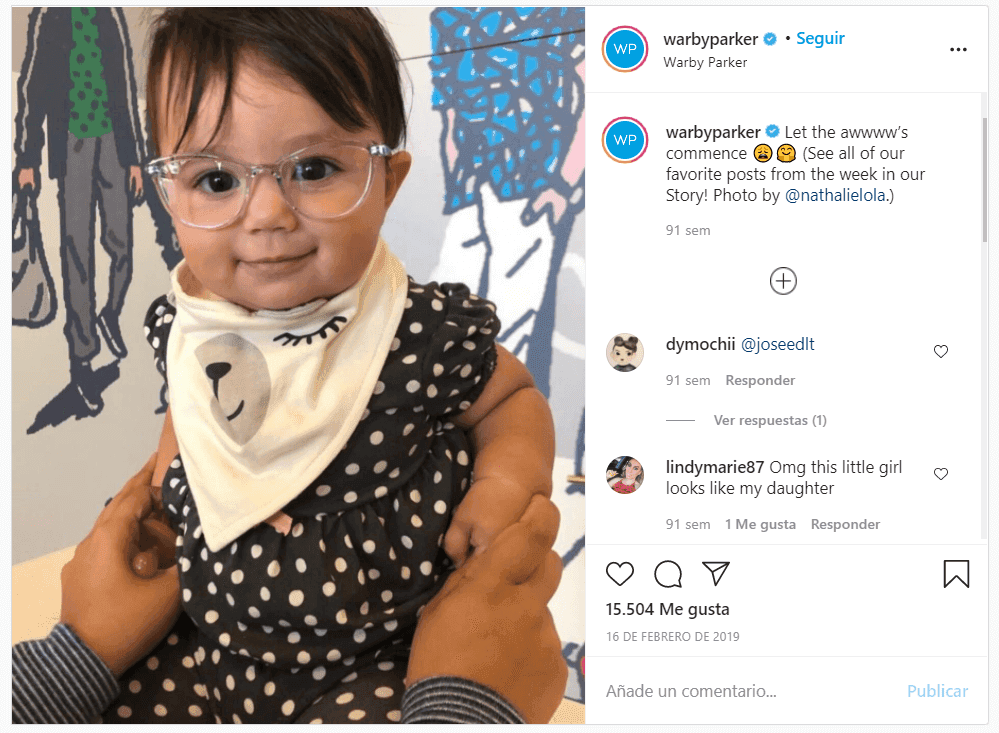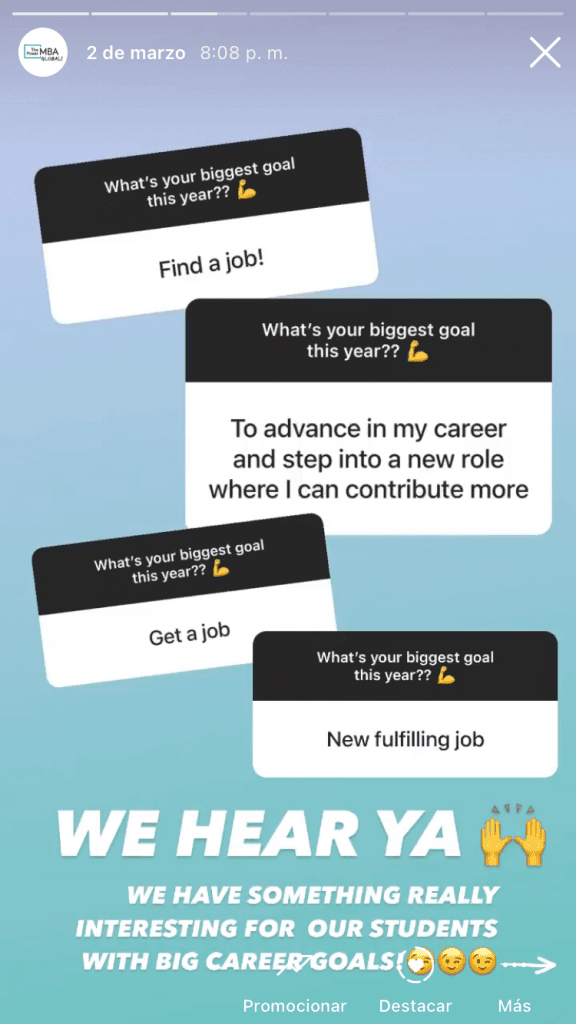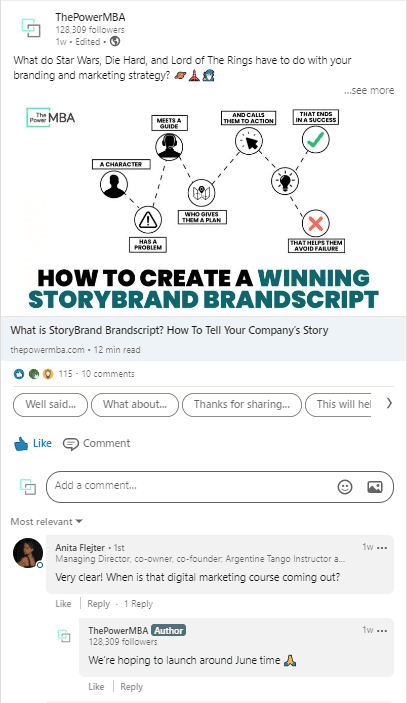Benefit of Social Media Marketing: Our Top 10 Hit List
If you’re wondering what the benefit of social media marketing is, then consider this, for a second.
As of January 2020, there were 3.8 billion social media users worldwide. This was almost a 10% increase (321 million new users) since the same time in 2019.
So if this increase in social media users continues at the same rate into 2021…
That means we are looking at roughly 4.2 billion people. Over half the world’s population 😅
The question then becomes, as a business, can you really afford not to be on social media?
Especially considering that after following a brand on social media, 91% of users visit their website, 89% will purchase from them, and 85% are likely to recommend them to family and friends.
So aside from the sheer volume of people, what are some of the other pros to social media marketing?
Well, we’ve got 10 of them for ya’!
Benefits of Social Media Marketing For Business
#1 Customers Are on Social Media
As the folks at SproutSocial pointed out, 91% of users visit a brand’s website after following them on social media.
But I’ve got another statistic I think you’ll find compelling...
According to the Global Web Index, 54% of social media users use the platforms to research products.
Not just that, but they’re also browsing through social media networks to get a handle on what people are saying about you.
Are people leaving product reviews?
What are they saying in the comments section of your latest Instagram ads?
Are the products popular?
Would they recommend it to their network?
If you’re not present on any social media platforms or don’t have a social media strategy in place, then you’re missing out on a whole bunch of consumer traffic.
Realistically, this is seriously damaging your business and equates to a loss in real dollars.
#2 Building a Community
A major difference between social media marketing and traditional marketing is community.
Basically, because it didn’t exist in traditional marketing.
Its one-to-everybody model doesn’t invite discussion or encourage debate over industry-related topics. It’s a one-way deal; brands create the content and consumers read it. End of discussion.
Well, social media marketing came in and turned that model on its head.
Different social media tools and platforms provide like-minded people with a safe space to discuss, purchase and interact with brands dedicated to their niche.
That’s the same for runners, triathletes, and rugby enthusiasts as it is for techno producers and cooking aficionados.
Whatever your interest, there's a dedicated online community to serve your needs.

A LinkedIn post from ThePowerMBA that encouraged a debate between Amazon and Google
This is perfect for brands.
Not only are you able to interact and communicate with your ideal buyer personas, but also build a community and be seen as a thought-leader within your niche.
#3 Collaboration
The abandoning of the one-to-everybody model has opened the world up to unprecedented levels of collaboration.
You can see its effect almost everywhere you look online.
Wikipedia (information), SoundCloud (music), and Crowdcube (crowdfunding) are just a few examples.
But perhaps the most common is influencer marketing.
No doubt you will have seen well-known figures you follow on social media collaborating with a brand to promote their products or services.

Professional triathlete Joe Skipper promotes Zwift’s Pro-Tri Series.
Often it’s a win-win for everyone involved:
Brands get their products promoted to a large audience in their niche.
Influencers receive compensation for posting.
Consumers are introduced to brands of potential interest.
#4 UGC (User-Generated Content)
Unfortunately, most people these days just don’t trust online ads. They know there’s an ulterior motive at play.
The purpose of an ad is to get you to click, view a product, and then buy it. End of.
The company doesn’t necessarily care (in many cases) whether you need it or not, reducing you to a PPC conversion figure. A strand of data on a digital marketer’s spreadsheet.
This is where UGC comes in.
As we covered in our organic social media post, sharing UGC is a powerful way to connect with your audience.
That’s because it humanizes your brand. It’s an endorsement of your product from a real-life customer, not a “sales pitch” from one of your ads.
Take a look at the following example:

Prescription eyewear and sunglasses brand, Warby Parker, posted this picture of a customer’s baby wearing a pair of their glasses.
It’s one of the cutest things you’ll ever see, and as such, generated over 15,000 likes.
If this photo had been staged, do you think it would have been as successful?
Probably not.
#5 Customer Service
If you’ve had a problem with a brand, it’s likely you’ve thought about reaching out directly on social media for a response.
That’s because customers are increasingly expecting brands to be available on their social channels for customer support.
A recent customer experience report from Zendesk showed that over 60% of customers thought speed was the most important factor in good customer service.
And there’s no other communication channel like social for a near-instant chat service.
Not being attentive to customer needs on social media can also be harmful to your brand.
It’s just as easy for people to leave a negative comment on your latest story, post, or online ad as it is an endorsement.
And we just mentioned how important endorsements are, so, keep that in mind!
#6 Brand Loyalty
Brand loyalty is basically your customer’s desire to stay your customer, and your ability to convince them to return again, and again, in the long run.
It also means they’re choosing you, over your competitors. 😉
Now, brand loyalty is deeply seated in positive emotions - building trust, satisfaction, attentiveness, relatability, etc.
This can be nurtured through your social media channels.
You can find ways to interact with loyal customers through surveys on Twitter, reposting UGC on Facebook, running opinion polls on Instagram, product giveaways, etc.

A poll we ran on our IG account
Loyalty is also closely tied to your customer service. People want to be reassured their loyalty to you is reciprocated.
So, when they reach out to you, make sure you respond as quickly as possible.
#7 Link Building
Yes, that’s right, social media can have a massive impact on SEO and link building.
For example, imagine you share a blog post or detailed guide on LinkedIn. The content is fantastic (of course) and resonates strongly with your audience.
As such, it is picked up and shared by many of your followers (whose own followers do the same).
Before you know it, there are hundreds of organically generated links pointing back to your original post.
Google will look at this as a positive sign your content is an authoritative source for (X) topic. And voila, you’re ranking #1 for your target keyword (we can dream, right? 😅).

A recent blog post we uploaded to LinkedIn on StoryBrand Brandscript that was shared over 500x
#8 Direct Traffic
A knock-on effect of having so many links pointing back to your site is, of course, direct traffic.
Like backlinks, this referral traffic is considered an important ranking signal by Google - plus it sends potential customers back to designated landing pages (if you so wish).
It’s important to remember to track these links in Google Analytics. This will help you determine:
What type of content resonates well with your audience.
What path they’re taking when interacting with your site.
Both useful data points to consider when tinkering with your digital content strategy.
While ideally, the majority of your traffic will be arriving through organic search terms related to your brand (and product), social media can be the perfect complement.
#9 Go Viral
Creating content that “goes viral” is the holy grail for social media marketers.
It’s content that (for sometimes no explicable reason) spreads like wildfire, being shared over and over again without any form of paid support.
It’s arguably one of the biggest benefits of social media marketing as it can massively raise brand awareness far and beyond your owned media channels.
What’s more, it’s completely free.
While it’s extremely difficult to do (and requires a lot of thinking out the box) one blender company reminds us that it’s not impossible!
Tom Dickson, CEO of Blendtec, realized YouTube could be a powerful marketing tool.
So, to demonstrate his product’s effectiveness, he decided to record himself blending household items:
It was an overnight success.
This novel idea piqued viewers’ interest, especially after they decided to open up “blendable” suggestions to its followers.
One video of a golf ball being blended alone received 1.7m views!
They also received national media coverage in the likes of Forbes, NBC, and the Discovery Channel.
You try getting your PR team to achieve the same on a $50 budget 😉.
#10 Competitive Analysis
The last social media marketing benefit we’re going to review is the ability to spy on competitors.
Not a 007-esque deep infiltration mission, but more careful observation.
Analyzing which type of Facebook ads they are running, which posts resonate strongest with their audience, and how often they’re posting provides you with some great insight:
Are there content gaps between you?
Where are they publishing and you’re not?
Do you post similar content that resonates with your audience?
What time are they frequently positing?
What platforms are they using?
Reviewing your competitors’ social media presence ensures you aren’t missing out on any potential opportunities that are proven to work.
Learn the Benefits of Social Media Marketing
If you’d like to really take your social media marketing up a gear, then how about getting experts to weigh in on your progress?
ThePowerMBA’s online business and digital marketing program (taught by the likes of ex-VP of Global Marketing at Coca-Cola and Airbnb CMO Jonathan Mildenhall) gives you a 360-degree vision of all your marketing channels, how to set goals, and incorporate social into your overall digital strategy.
Take a look and see if it’s a good fit for your business!
15 dic 2023
30 may 2023
8 may 2023
10 mar 2023
28 dic 2022
14 dic 2022






